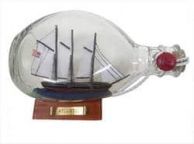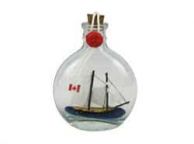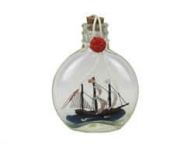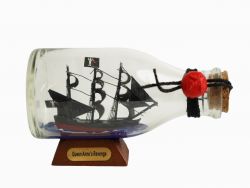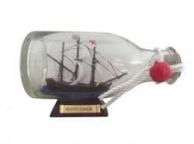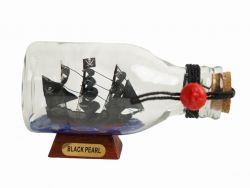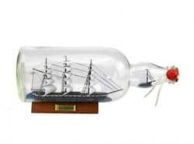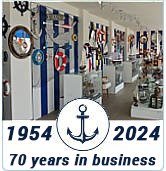|
|
| (69 Items) Sort: | Show: / page |
Ships In A Bottle Models
A Ship in a bottle is a classic piece of nautical décor. Resting easily upon a mantle, shelf or desk, this wonderfully fun item offers the enjoyment of a tall ship model, the pleasure of fine craftsmanship and a hint of mystery from the impossible nature of the design. Part quality décor, part curious puzzle, a ship in a bottle is entirely fun.
Handcrafted Model Ships is pleased to offer a collection of ship in a bottle designs that celebrate several different classes of tall ships. From iconic warships to classic clipper ships to adventurous pirate ships, our selection of ships in a bottle designs offer a wonderful gift for any nautical enthusiast.
The ship in a bottle is probably the best known of a broader category of puzzle known as the “impossible bottle”. Any items from a model ship to playing cards to a rope tied in knots to a piece of fruit may be found inside an impossible bottle. In all instances, the bottle is entirely intact (that is, the bottom or another section is not removable), everything inside it has entered through the neck of the bottle, and the neck is too narrow for the item to come back out of the bottle.
In the case of a ship in a bottle, there are two basic methods to achieve this puzzling design.
The simpler and most common method is to build the model outside of the bottle. In this case, the hull of the ship must remain narrow enough that it can fit through the neck of the bottle. Masts are attached to the hull, but are hinged so that they lie down flat against the hull, and all spars must similarly be hinged, or narrow enough to fit through the width of the neck.
Once the entire model has been crafted outside the bottle and perhaps even fully-rigged, the masts are folded down against the deck and the model carefully inserted through the neck into the bottle. After the model is carefully positioned and secured to its place inside the bottle, strings attached to the masts and rigging are pulled taut to raise the masts on their hinges and complete the appearance of the model. Long-necked snips or a long-handled knife then cut away the pull-thread and the bottle may be closed with the “impossible” ship inside.
Alternately, a method more tedious and time-consuming, but perhaps more personally rewarding for the craftsman, is to build the ship entirely within the model. Rather than hinged masts or spars of a limited length, the model can be constructed according to any specifications the builder desires. Individual pieces must still be able to fit through the neck of the bottle, and the craftsman must become proficient with the use of specialized, long-handled tools in order to complete all the work on the model only able to access it through the bottle’s narrow neck.
Although many people have constructed ship in a bottle and other impossible bottle designs over the years, the most famous “master” of the impossible bottle was a school teacher named Harry Eng. During his lifetime, he created 600-700 impossible bottles, with several museum collections devoted to his work.
Mr. Eng’s bottles contained a vast array of items, from padlocks to golf balls or baseballs to decks of playing cards or even books. One of his trademarks was to tie complex knots inside the bottle which are too large once tied to pull through the bottle, but often with the width of the rope filling the entire neck that left little or no room for tools to operate. Although Harry described the methods he used to create some of his bottles, this master of the impossible bottle took most of his secrets to his grave, leaving behind only his collection of amazing puzzles.
For most people, however, a ship in a bottle is not really about the mystery of its construction. Rather, it is the simple enjoyment of a delightful piece of nautical décor set on a shelf, mantle or desk that carries with it the romance of the sea and a small thrill of escape we enjoy when viewing it.
 Handcrafted
Handcrafted Handcrafted
Handcrafted Handcrafted
Handcrafted Handcrafted
Handcrafted Handcrafted
Handcrafted Handcrafted Model Ships
Handcrafted Model Ships
